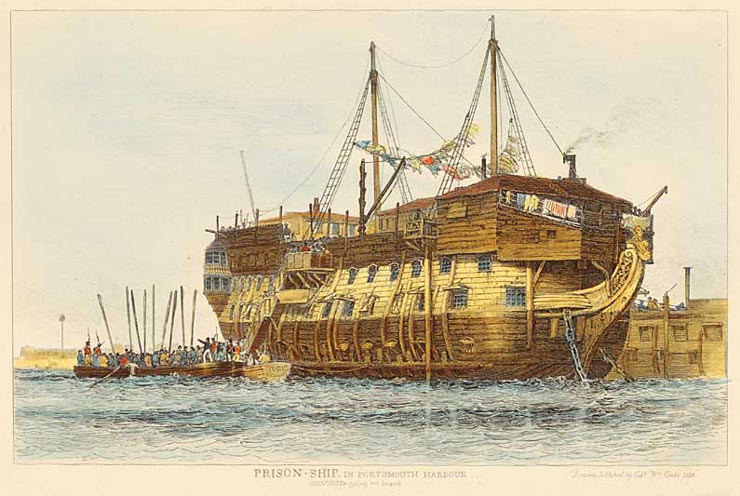 Convicts boarding a hulk at Portsmouth, 1828
Convicts boarding a hulk at Portsmouth, 1828
TLF ID R3217
This is a hand-coloured etching, sized 16 cm x 24 cm, of a hulk (prison ship) anchored in Portsmouth Harbour, England. A large rowboat filled with convicts and soldiers approaches the hulk with oars held upright ready for boarding. The ship has stairs and additional rooms built on it, washing hangs from lines strung across it and smoke rises from a chimney pipe.
